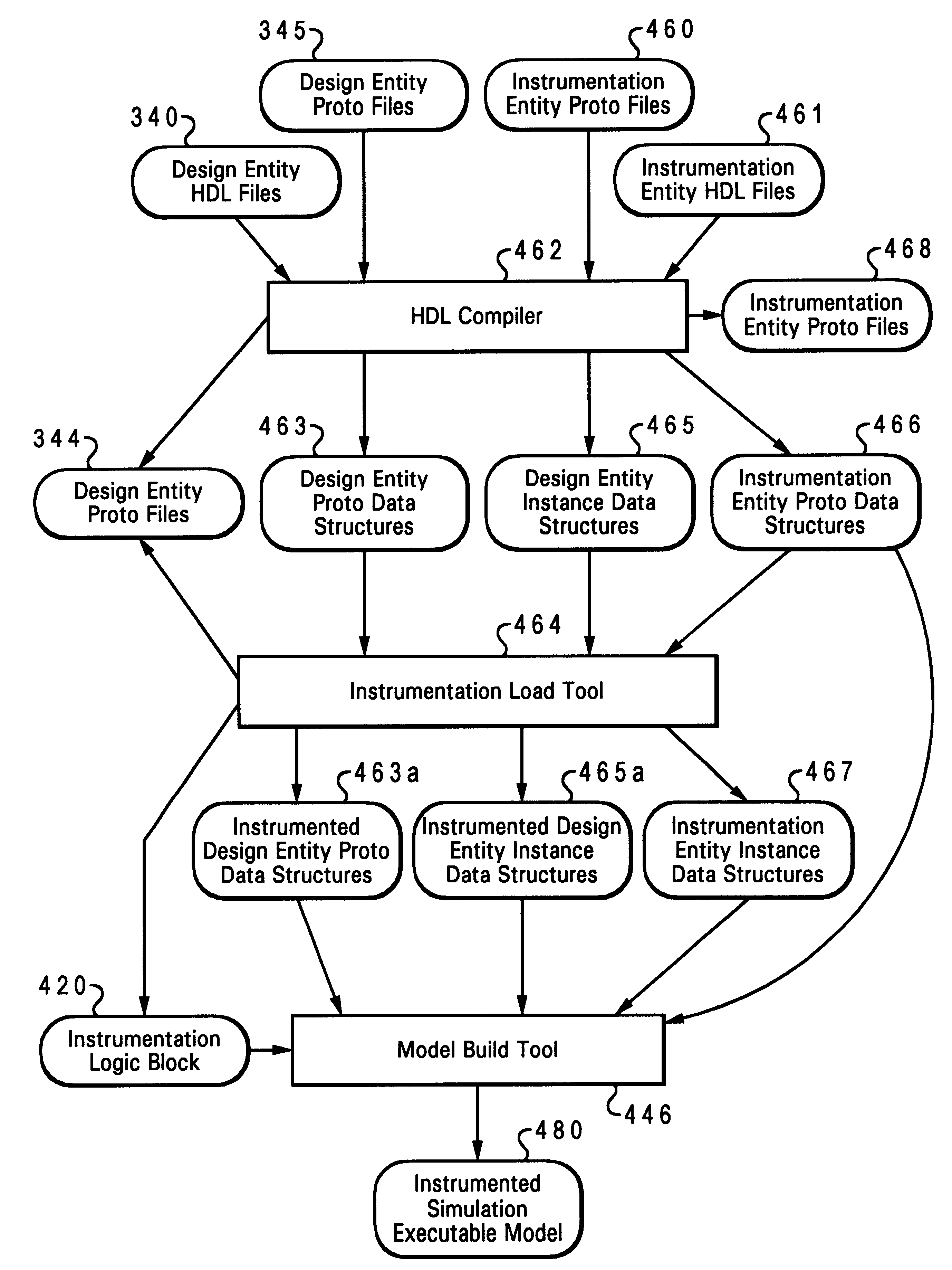Method and system for incrementally compiling instrumentation into a simulation model
a simulation model and instrumentation technology, applied in the field of interactive design and simulation of complex circuits and systems, can solve the problems of large investment in simulation, high cost and time-consuming segment of the overall design process, and the inability to accurately simulate the simulation process, etc., to ensure the highest possible accuracy and efficiency in the process used
- Summary
- Abstract
- Description
- Claims
- Application Information
AI Technical Summary
Benefits of technology
Problems solved by technology
Method used
Image
Examples
Embodiment Construction
The present invention accomplishes the goal of accurately and comprehensively monitoring the operation of a digital circuit design by allowing for designer creation of instrumentation modules in the same hardware description language (HDL) as utilized for the design. HDLs, while suited to the needs of digital designers can also be effectively utilized for a number of checking functions. By allowing a digital designer to utilize the HDL to create checking and instrumentation modules, the need to learn a language such as C or C++ is eliminated. These instrumentation modules will be utilized to monitor specified design parameters while not becoming an integral part of the design itself. Furthermore, since these instrumentation modules are written in the same HDL as utilized in the actual design, such modules are platform and simulator independent. Unlike checking done with C or C++ programs, HDL instrumentation can be compiled and run directly without loss of performance on hardware si...
PUM
 Login to View More
Login to View More Abstract
Description
Claims
Application Information
 Login to View More
Login to View More - R&D
- Intellectual Property
- Life Sciences
- Materials
- Tech Scout
- Unparalleled Data Quality
- Higher Quality Content
- 60% Fewer Hallucinations
Browse by: Latest US Patents, China's latest patents, Technical Efficacy Thesaurus, Application Domain, Technology Topic, Popular Technical Reports.
© 2025 PatSnap. All rights reserved.Legal|Privacy policy|Modern Slavery Act Transparency Statement|Sitemap|About US| Contact US: help@patsnap.com



